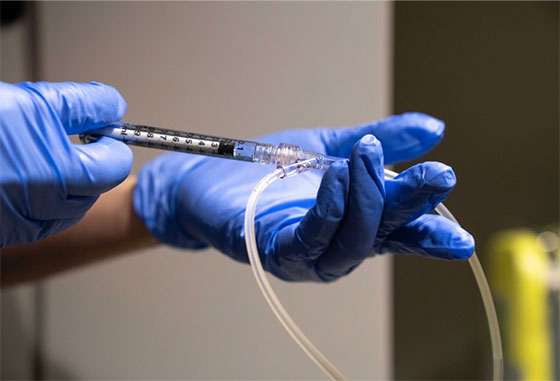NASEMSO Releases Evidence-Based Guideline on Prehospital Pain Management
Pain management remains a critical component of prehospital patient care, as one of the most common reasons people request EMS is because of pain—whether it’s acute or chronic, mild or severe, the result of trauma or a medical condition.
To address this crucial topic, with the goals of better understanding and improving prehospital pain management, the National Association of State EMS Officials (NASEMSO) convened a multi-disciplinary technical expert panel to develop an evidence-based guideline (EBG) on prehospital pain management.
The project, which was funded by the National Highway Traffic Safety Administration (NHTSA) and the Health Resources and Services Administration, also relied on important guidance from the National Association of EMS Physicians (NAEMSP) and the American College of Emergency Physicians (ACEP).
The EBG technical expert panel included EMS clinicians and experts in EMS education, emergency medicine, pediatrics, pain management, pharmacology, trauma care, guideline development methodology, patient advocacy and EMS data. Together the panel examined current topics and concerns related to pain management in prehospital care and used recent scientific literature to develop the EBG.
Addressing the Greatest Concerns
The panel noted some specific areas of concern related to prehospital pain management, including opioid use, bias and disparity, and pediatric care. Historically, prehospital pain management was often limited to the use of opioids, primarily morphine, for acute pain management. In light of the worsening opioid crisis, the EBG examines issues surrounding the routine use of opioids for acute pain management. Overall, the recommendations emphasize that EMS medical directors and EMS clinicians have a variety of effective options for moderate to severe pain management, in addition to opioids, when creating patient care guidelines and caring for patients suffering from acute pain.
On the topic of bias and disparity in the management of acute pain, the panel calls for increased education in an effort to mitigate bias based on race and sex. In addition, the EBG sheds light on the particularly challenging topic of assessing and managing acute pain in the pediatric population and offers recommendations based on current literature.
You can read the pain management evidence-based guideline, find model protocols and access training materials and other information on the NASEMSO website.
In addition to NASEMSO, NHTSA collaborates with a variety of partners to promote an evidence-based EMS system. Systematic reviews, EBGs and clinical protocols based on EBGs are important steps in achieving the vision of a people-centered EMS system described in EMS Agenda 2050. For more information on prehospital EBGs, Pain management remains a critical component of prehospital patient care, as one of the most common reasons people request EMS is because of pain—whether it’s acute or chronic, mild or severe, the result of trauma or a medical condition.
